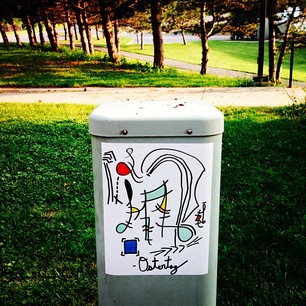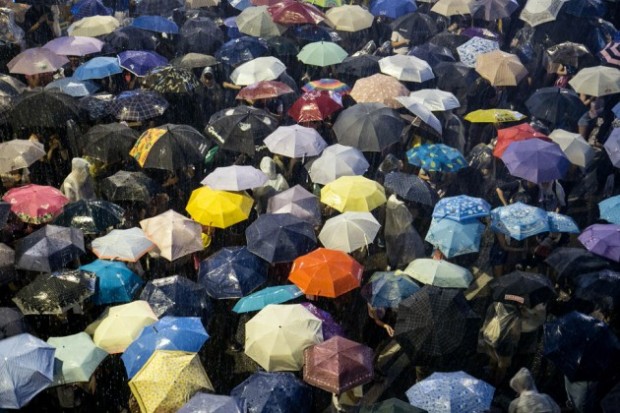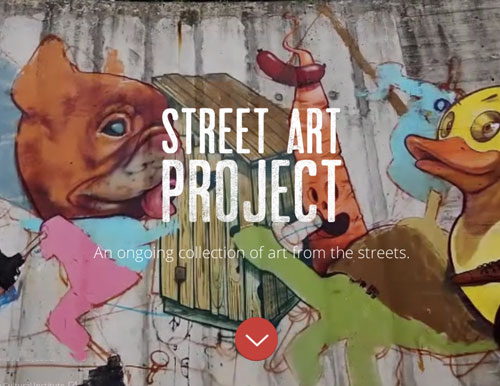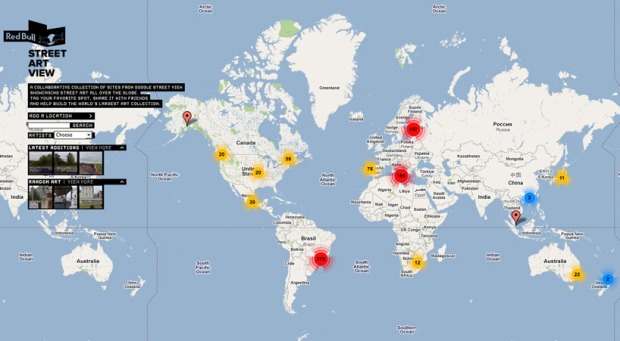Studying abroad in Barcelona for the past 4 months had made me fall in love with the city—the street performers, food, laid-back lifestyle, history, people, art, and plethora of activities.
Every day I’m here Barcelona surprises and inspires me in a new way. Barcelona is like Paris, New York, or Tokyo—any major city in that there’s always something to do, and you’d need a lifetime to do it in.
But as tourists we don’t get a lifetime to see a city. We get a few days, maybe a week or two if we’re lucky. We see as much as we can before we move on. So for those with limited time, what can we do? How can we maximize our time in a place like Barcelona where there’s just so much to see? Well, seeing as Summer is right around the corner, I’ve created a sample itinerary for your Summer vacation in Barcelona to help you organize and maximize your time in this incredible city:
Day 1
Barri Gotic
 This is Barcelona’s historic center and dates back to pre-Roman times. The area is a maze of tiny streets that turn around on each other and open into lovely squares and plazas. Highlights include:
This is Barcelona’s historic center and dates back to pre-Roman times. The area is a maze of tiny streets that turn around on each other and open into lovely squares and plazas. Highlights include:
Barcelona History Museum – Barcelona has one of the best city history museums I’ve ever been to. It does an incredible job of explaining the history and importance of Barcelona and has over 4,000 square meters of Roman ruins located beneath the museum that you can walk through. It’s spectacular. There’s a free, detailed audio guide and descriptive explanations of what you’re seeing.
Picasso Museum – While I’m not a huge fan of most of Picasso’s later work, with over 3,000 pieces of art, this museum has a lot to see, and even I was happy.
The Gothic Cathedral – Located in the heart of the Barri Gotic, this Gothic cathedral was built on top of an 11th-century church. You can take an elevator up to the roof for sweeping views of the surrounding historic area.
Lunch: La Boqueria – This is the famous central food market in the Barri Gotic and one of the best places to grab lunch in the area. (Watch out for crowds!)
Barcelona Museum of Contemporary Art – In the Raval area of town is the city’s modern art museum. They have hundreds of exhibits, especially from Spanish artists. If you love modern art, it’s worth a stop.
Night 1
Parc de la Ciutadella
On the complete other end of the Barri Gotic (it’s a beautiful walk through the historic streets, so you’ll enjoy it) is the Parc de la Ciutadella. Gaudi designed the famous Cascada Fountain when he was an architecture student. On a warm day, I just like to sit and stare at the fountain. There’s also a zoo in the park and some short walking paths. Take a bottle of wine, grab some ham, and have a picnic.
Day 2
Food tour
Barcelona has some of the best food in Spain, and there’s no better way to spend your morning than learning about the food culture of the city. I strongly recommend Context Travel’s food tour, which takes you around the Barri Gothic and the food markets there to highlight the food history and delicacies of the region. One of the most informative and delicious tours I’ve been on in a while, it’s not the cheapest food tour in the city, but I got everything I paid for.
Beaches
No trip to Barcelona is complete without a visit to its famous beaches. After you’ve gorged on food, siesta all day on the beaches, work on your tan, and relax with all the locals who had the same idea. Day one was a busy one, so make day two relaxing.
Day 3
Gaudi
Gaudi is Barcelona’s most famous architect and is considered the father of the modernitsa architecture movement. His unique style, use of nature, and catalog of work draws a lot of attention and visitors to the city. You can find his work spread throughout the city, but in the Eixample area, you can visit these four big sites:
Sagrada Familia, Park Güell, Casa Mila, Casa Batllo
Lunch – Take a breather (and a late lunch).
 Walking tour– While still in the Eixample area, you can visit all the other modernista movement sites.While Gaudi was the most famous architect of the movement, Barcelona is full of modernista-style buildings by other great architects. You can identify the buildings by the red circle in front of them on the sidewalk. You can also take the Context Travel tour about the movement or simply download a mini walking guide (right) and do it yourself.
Walking tour– While still in the Eixample area, you can visit all the other modernista movement sites.While Gaudi was the most famous architect of the movement, Barcelona is full of modernista-style buildings by other great architects. You can identify the buildings by the red circle in front of them on the sidewalk. You can also take the Context Travel tour about the movement or simply download a mini walking guide (right) and do it yourself.
Night 3
Visit Placa d’Espanya at night (Thursday)
On Thursdays, the Placa d’Espanya has fountains and lights that line the street towards Montjuïc Hill. At the end is the Magic Fountain of Montjuïc, which puts on a spectacular light and water show. Afterwards, walk up the hill to the Museu Nacional d’Art de Catalunya for an expansive view of the city. This is also a great place to take a date. Very romantic!
Day 4
Harbor Cable Car

The 1450-meter long harbor aerial tramway with red cars connects Montjuic and Barceloneta. It starts near the beach on top of the 78-meter tower and takes you all the way to Montjuïc Hill.
Montjuïc Hill – When you arrive on the hill from the cable car, you’ll be able to enjoy a good view of the city and visit the Castell de Montjuïc (a large 18th-century fortress), as well as gardens, a Spanish village, and some Olympic stadiums. There’s a lot to do here, so you’ll have plenty of choices.

Museu Nacional d’Art de Catalunya- The Catalunyas take regional pride very seriously. They’re Catalunyas first, Spaniards second, if at all. It was no surprise to me then to find a whole museum dedicated to art of the region. Since it’s high on a hill, you can use the museum’s patio to take pretty epic photos of the city.
Day 5
Relax
On your last day in Barcelona, relax and just enjoy the city. Every city visit needs a free day where you can just slow down and not feel rushed. Use this day to do whatever you want.
Suggestions:
Hit the beach again – work on your bronze a little more.
See anything you haven’t seen – didn’t get time to visit some other sites, museums, or walk through some neighborhoods? Spend your afternoon doing that!
Eat a ton – you can never have enough food in Barcelona.
Drink lots of sangria –every restaurant has its on take on Barcelona’s famous sangria. Try them all!
Other things to do:
Barcelona hosts many other activities beyond just the normal picture-taking sightseeing:

See a soccer match: The first football game I ever saw was in Barcelona. It was FC Barcelona versus Valencia. I still have the shirt I bought that day. Barcelona’s two teams are Espanyol and FC Barcelona (one of the top in the world).
Learn to cook – Since Barcelona is such a food-centric city, if the normal sights and activities bore you, take a food class. There are many one-day cooking classes offered.
Day trip to Figueres – This region is home to Dalí, and you can take a day trip to Figueres, where you can visit the Dalí museum featuring some of his most famous works.
For more suggested eating, check out these places:
- Cerveseria Catalana, Carrer de Mallorca, 236- http://www.yelp.com/biz/cervecer%C3%ADa-catalana-barcelona-2
- La Fonda, Escudellers, 10 – www.lafonda-restaurant.com
- Cal Pep, Plaça de les Olles, 8 http://www.calpep.com
- Allium Restaurant, Carrer del Call, 17 – www.alliumrestaurant.es
- Pinotxo, La Boqueria – http://pinotxobar.com
- Can Majo,Almirante Aixada, 23 http://www.canmajo.es
For your Summer vacation you could squeeze in the real highlights of Barcelona in two or three days, but taking five (or even six) for the above itinerary gives you enough time to gorge on Iberian ham, tapas, and sangria while not rushing around.
Studying abroad this semester in Barcelona, there are a few tips I wish I had known when I first arrived: Barcelona moves slowly—dinner’s at 9, you’re early to the bar if it’s before 2am, and everyone sleeps late and loves their siesta. And since this city moves slowly, so should you. Sleep late, take breaks, eat lots, don’t rush your visit, and just enjoy Barcelona—at a Spaniard’s pace!
I thought I’d save the best, in my opinion of course, for last. If you find yourself vacationing in Barcelona this Summer and are looking to see some incredible street art, there is no better way to tour this vibrant city and its culture than a Barcelona’s famous street art tour!
Whether you want to see
Barcelona Street Art Tours: http://barcelonastreetstyletour.com























































